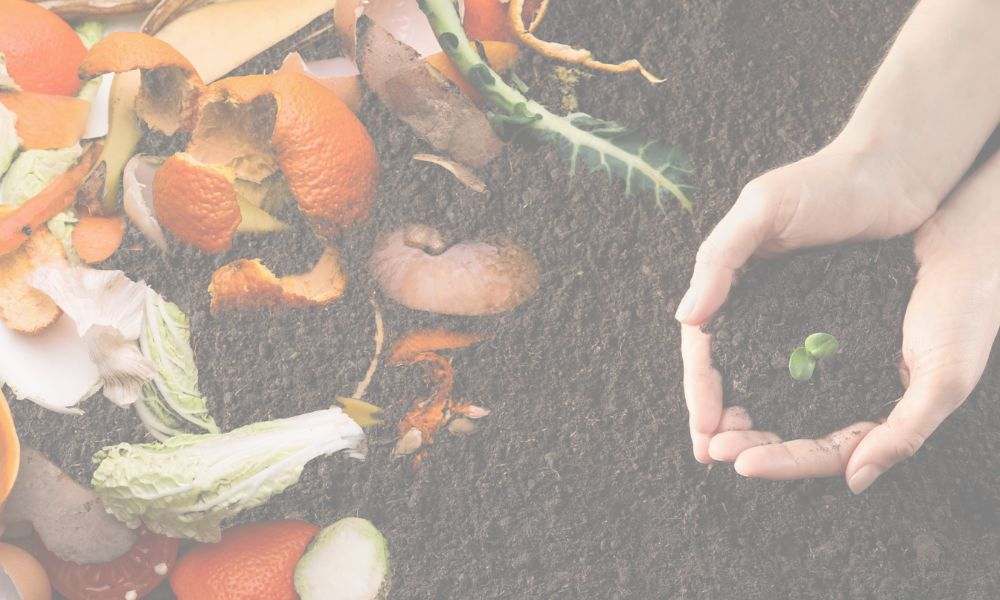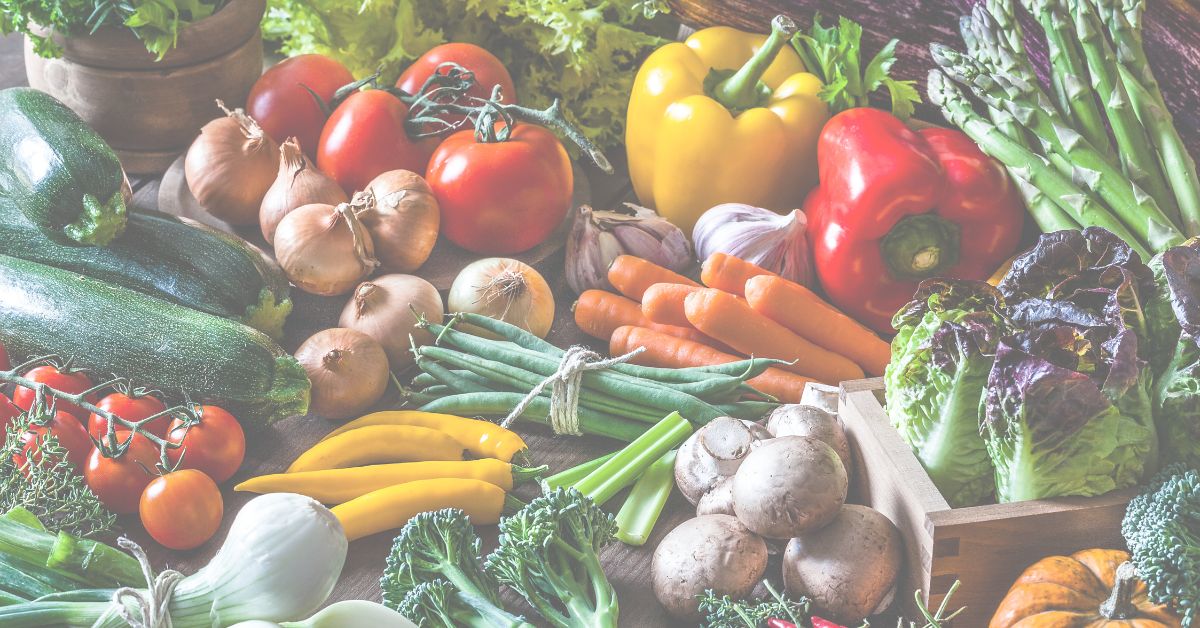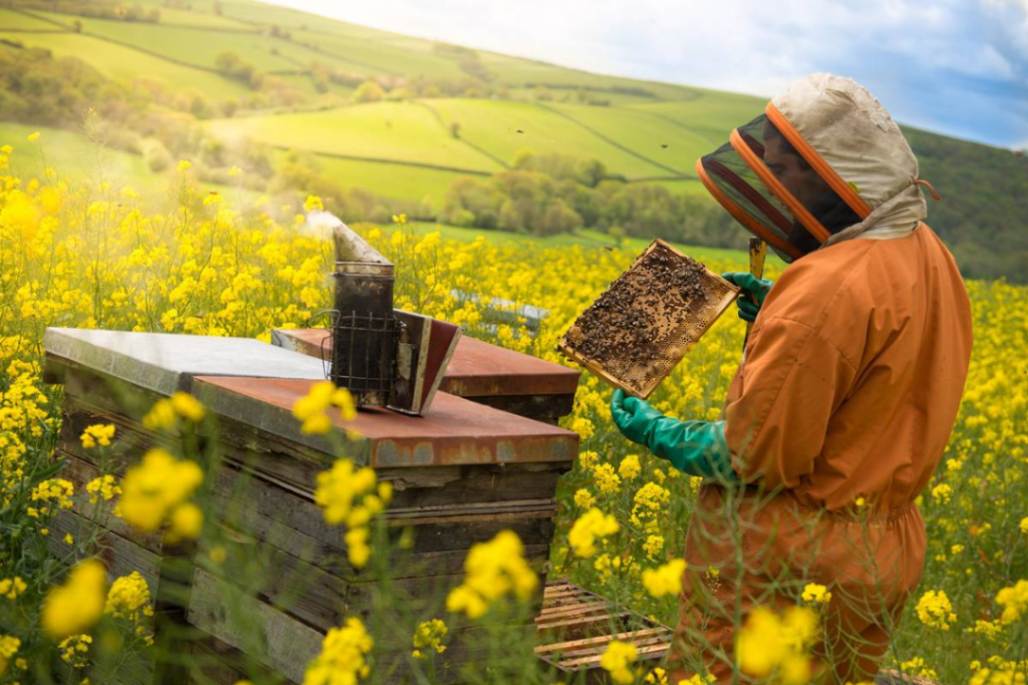Introduction:
Mango also known as the “King of Fruits” holds a special place in the hearts of the people across the world. Mango is scientifically Mangifera indica L. and belongs to the family Anacardiaceae characterized by the presence of resinous canals. It is native to the Indo-Burma region. India is blessed with the varieties of Mangoes that have earned it the title of “Mango Capital of the World.” India’s favorite fruit, the mango, is a delicious, juicy fruit with a distinct flavor, bright color, and sweet taste. Mango is a rich source of Vitamin A. The harvesting of the fruit takes place in the summer, and it is a significant event in Indian culture. Mangoes have always played a significant role in Indian Culture, Cuisine, and even Spirituality. Mangoes in India come in many different varieties and each of them has its distinct taste, colour, and texture. With more than a thousand varieties cultivated all over the nation, every area of India has its distinct collection of mangoes that represent the country’s varied soil types and climatic circumstances.
Understanding the Mango Season in India
In India, the Mango Season is from March to August. Many mango types are available throughout India, with different regions—such as Tamil Nadu and Andhra Pradesh—having their production seasons. Within India, every region contributes a distinct taste and fragrance, such as the sweet and tangy Kesar mangoes of Gujarat and the aromatic Alphonso mangoes of Maharashtra. The perfect combination of rainfall, temperature, and humidity results in a fruitful mango season that produces mouthwatering, juicy fruits.
Though there are nearly 1000 varieties of mango in India, only the following varieties are grown in different states: Alphonso, Bangalora, Banganpalli, Bombai, Bombay Green, Dashehari, Fazli, Fernandin, Himsagar, Kesar, Kishen Bhog, Langra, Mankhurd, Mulgoa, Neelam, Chausa, Suvarnarekha, Vanaraj, Zardalu, Arka Anmol, Arka Aruna, Arka Neelkiran, Arka Puneeth, Pairi, Neelphonso, Ratna, Sindhu, Sonpari Tommy Atkin.
Varieties of Mango for Processing: Alphonso, Banganapalli, Totapuri
Varieties of Mango for Export: Alphonso, Banganapalli, Sendura
So, let’s explore the various types of Mangoes in India and discover the various areas where this delicious fruit is grown:
Alphonso Mangoes:
Alphonso Mangoes is considered the King of Mangoes and is known as “Hapus”. They are mainly grown in the Western states of India, mainly in Maharashtra’s Ratnagiri or Devgad region. Alphonso has become a popular variety among organic growers, because of its better varietal characteristics and better market.
They are famous for their sweet, creamy, and rich taste. It was named after the Portuguese general and military specialist Afonso de Albuquerque, who helped in the founding of Portuguese colonies in India.
They are one of the most popular and eagerly awaited mangoes. Tropical scent and sweet, buttery pulp are what attract Alphonso lovers to these mangoes, which grow during the peak of the season, which is late March to mid-June. In addition to being delicious, the Alphonso mango is a great source of important nutrients. It is a great source of vitamin C, which strengthens defenses against illness and infections. Additionally, the fruit has a lot of fiber, which supports digestive health and facilitates digestion. The Alphonso mango is also a great source of antioxidants, which lower the risk of chronic diseases and protect against cellular damage.
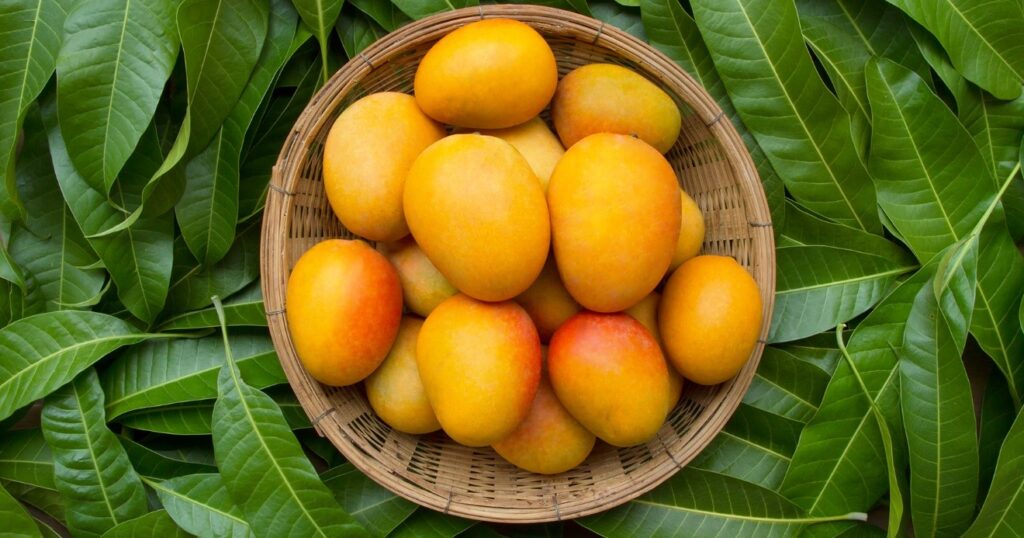
Kesar Mangoes:
Kesar Mangoes are grown in Gujrat and are known for their unique flavor, aroma, and sweetness. They usually have a sweet taste mixed with a bit of tanginess in it. They are known as “The Saffron Queen of Mangoes” and are named after their Saffron-like color. Since kesar aam grows between May and July, it’s a popular summertime option. Kesar mangoes range in size from small to medium, with a weight of 150 to 300 grams per fruit. The inside of the fruit is orange-yellow, and the skin is bright yellow with a hint of green. The fruit has a pointed end and a somewhat flattened form. Vitamins A and C are high in kesar mangoes. They are a nutritious snack option because they also include fiber and potassium.
Langra Mangoes:
They are grown in the northern state of Uttar Pradesh mainly in Varanasi and Lucknow. They are medium-sized, have green skin, and have a slightly curved shape. They are known for their juicy pulp and unique sweet flavor. They are available from June to August. They have a lot of vitamin C, which is good for boosting immunity. Also, they have a lot of dietary fiber, which improves digestion. They can be used in a variety of dishes such as smoothies, salads, and desserts.
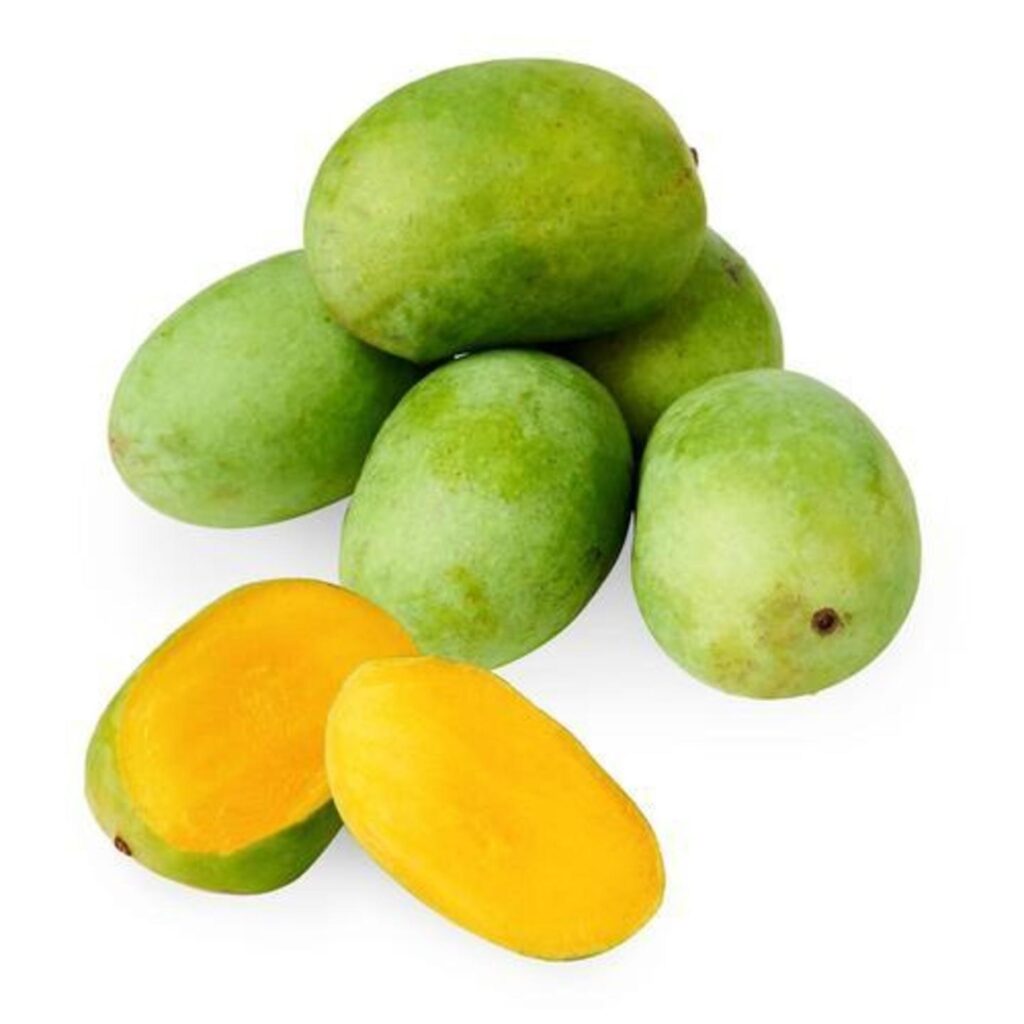
Himsagar Mangoes:
Himsagar Mangoes are found in the Murshidabad District of West Bengal. They appear in medium to large sizes and are oval. They are known for their juicy, sweet, aromatic skin, which is golden yellow with a bit of reddish. They are fiberless with a little seed in the middle. The Himsagar mango season goes from May to July. They are regarded as one of the early-ripening types of Mangoes. They are consumed raw but also used in making other dishes like lassi, ice cream, and chutney. They are also used to make jams, jellies, and pickles.
Dasheri Mangoes:
Dasheri Mangoes are known as the “Royal Mango of Uttar Pradesh.” They hold a special place in the hearts of all the Mango lovers. They originated in the small town of Uttar Pradesh named Dasheri near Lucknow. Today they are grown in several parts of India like Bihar, Haryana, and Punjab. They have a sweet taste and juicy pulp and have thin skin. They have a smooth, creamy texture that practically melts on your tongue. They are usually used to make lassi, shakes, and aamras. They are a true gem of Indian culture with their unique taste and texture. They will surely leave you with a sweet and tasty experience after eating.
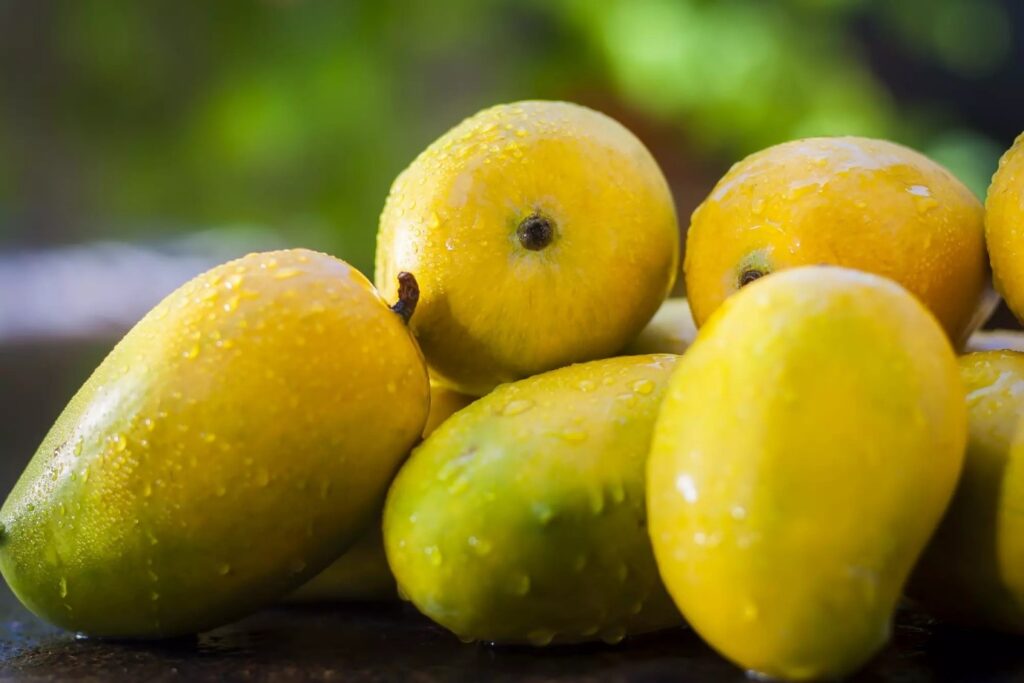
Conclusion:
An Indian mango provides a unique experience when eaten. Mangoes are the primary component in delicious, refreshing summer drinks like mango lassi and aam ka pana. A true mango fan can only enjoy the summertime by indulging in the taste of mangos.
Why choose SapAgro’s Training Program Expert Guidance:
Learn from seasoned professionals with over 17 years of hands-on experience in organic farming.
Comprehensive Curriculum: Sap Agro’s program covers every aspect, from soil health to market strategies, ensuring a holistic understanding of organic farming.
Proven Success Stories: The success stories of farmers trained by Sap Agro stand as a testament to the effectiveness of their training program.
Sustainable Practices: Gain insights into sustainable farming practices that not only benefit the environment but also contribute to the profitability of your venture.
In the pursuit of a profitable and sustainable future in organic farming, Sap Agro’s Organic Farming Training in India Program becomes a guiding light.
As we conclude this exploration, we encourage aspiring farmers to consider Sap Agro as a gateway to success. Seize the opportunity to learn, grow, and thrive in the organic farming landscape with Sap Agro. Together, let’s cultivate a future that not only yields profitable harvests but also nurtures our planet for generations to come.

